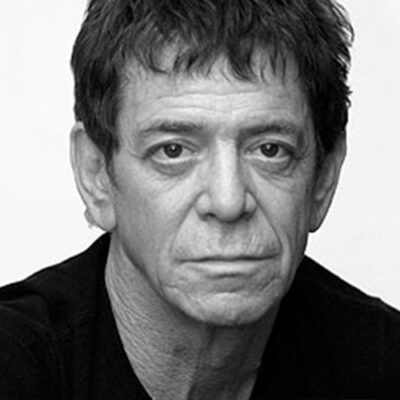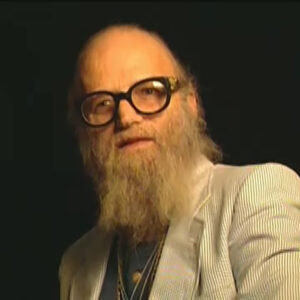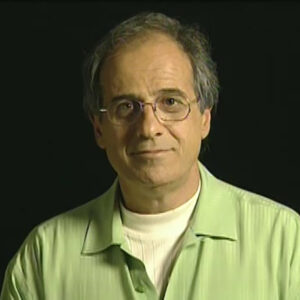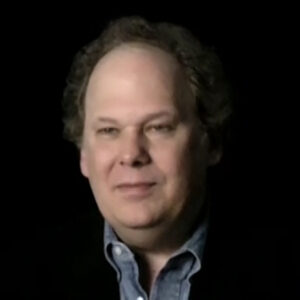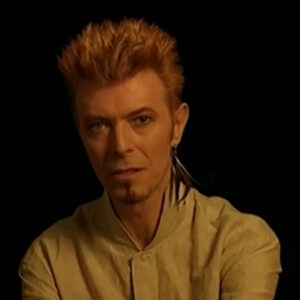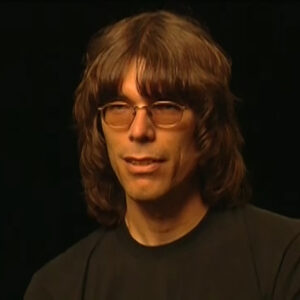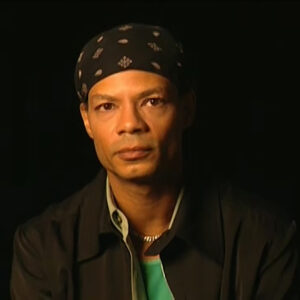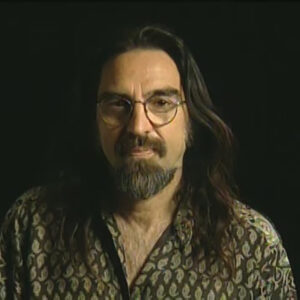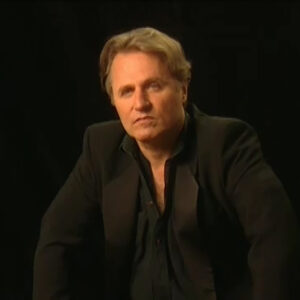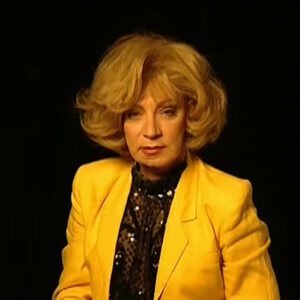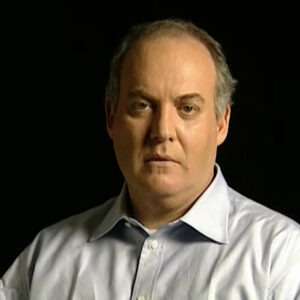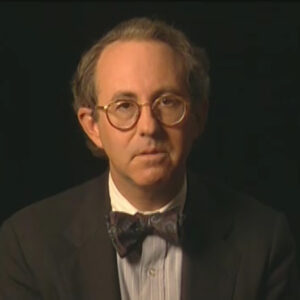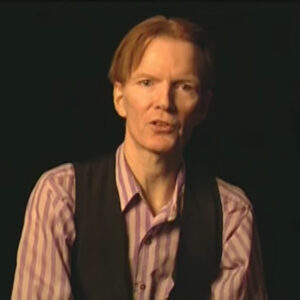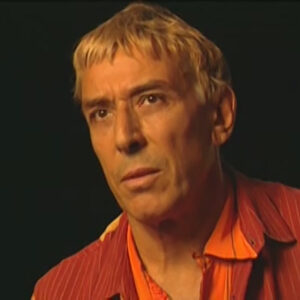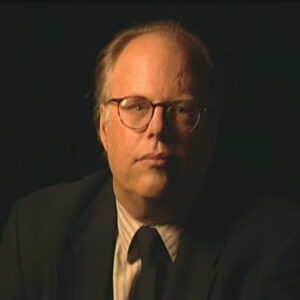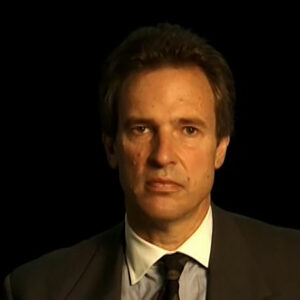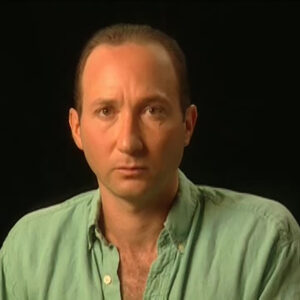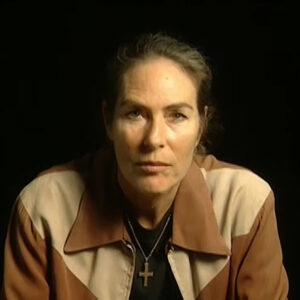Speaker I think I was probably in college in the mid 70s when I really discovered the Velvet Underground. Before that, it had been sort of British invasion music, Beatles and Stones and whatever was going on out on the West Coast. The psychedelic music of the airplane and the Grateful Dead, things like that. And it was really in spite of growing up in New York, it was really a couple years later that I actually was first exposed to, especially the first Velvet Underground record, the banana peel one. And it almost immediately knocked me out. And it was mid 70s. It was it was the time when it was just pre the entire punk invasion that was happening in England and especially in New York. And that record just seem to point the way to so many things at that point, and not just that record, everything that they did and that Lou Reed subsequently did just seem to open up a million different doors and specific songs.
Speaker Well, I mean, songs on the on the first couple of Elvis records. I mean, you had this wonderful balance. I mean, you had really beautiful songs on the one hand, like Pale Blue Eyes and All Tomorrow’s Parties and Sunday morning. And on the other hand, you had these songs full of like Chaos and sort of this, you know, guitar inflected sounds of New York City like Black Angels, Death Song, European son and Sister Ray, especially on the second record, which in a way is kind of a blueprint for half the music made in New York from 1978 to 1984 or something like that. Just something remarkable about that. I mean, there wasn’t really anyone else trying to capture on vinyl that kind of energy and wild, like chaotic emotion. And interestingly enough, I mean, it seems like, especially in retrospect, that what they were trying to do came out of so many different sort of sources that they were drawing on. I mean, you had Cale with his sort of classical training train background and and Lou’s sort of literary bent and just the whole thing. I mean, they were they were pulling on a lot of different sources in a similar way to what I feel Sonic Youth does because of our backgrounds are very varied and and are are listening. Tastes are much wider than just a very narrow rock genre. So those records were just incredibly influential.
Speaker And the lyrics at the time was so unusual. It was.
Speaker Yeah. Well, the lyrics that Lou was writing in the early days of the Velvets were doubly remarkable just because they seemed to be taught to be talking about subject matter that no one else was addressing at the time, especially considering, you know, someone living in New York, someone sort of steeped in New York music. You know, he was singing about about heroin, I suppose is the most obvious example. But gay culture at the time and and the whole sort of scene surrounding Warhol and everything that that opened up culturally in New York at the time. I mean, at that time, people seemed to be listening a lot to what was going on in San Francisco. And the vibe lyrically was so much more like sort of, you know, unicorns and magic and mushrooms and whatever. And Lou’s writing was such a hard, sober bit of reality compared to that. And as well, I mean, it had sort of more grandiose literary aspirations on its own. And they weren’t just aspirations. I mean, a lot of the stuff you see it reprinted in his books, it works really well on the page. Divorced from the music simply because he studied literature and he really knew where he was coming from in the way he wrote. It was very, very influential. A lot of crazy wordplay. That song, The Gift and the murder mystery, both of which are not like your standard rock lyrics, opening up songs. Which one is it? It’s the murder, the gift, I think, which has the voice only on one side and the music on the other side. So you could listen to them separate or together. I mean, very influential in terms of the spatial play of making records. At that time, they weren’t trying to make three minute pop songs, although they did a fair amount of that, too. I mean, songs like Sweet Jane and Rock and Roll and even Waiting for the Man.
Speaker I mean, you know, those were those were concise slices of rock and roll and pop pop music, even in some some read some regarding any particular songs of your own that you relate to.
Speaker Well, as far as music by Sonic Youth, that that is directly influence, it’s it’s it’s kind of hard to say in a direct correlative way. I mean, we certainly listen to an awful lot of that music, especially during the first five or six years of our band’s existence. Those records were always talked about and always on our lips. And it was interesting. We were very interested in the sort of East Coast, West Coast culture clash that they seemed to embody in a certain way. I mean, at the same time that you had sort of, you know, Altamont and Manson and the end of the sort of hippie idealism of San Francisco in the late 60s, I mean, those records really embody that. And you’d read stories of the first couple of velvet trips out to the West Coast and how they were really taken as these alien creatures that no one could relate to out there dressed in black and sunglasses. And yet, you know, a few years later, you had bands from New York coming up, you know, television and Richard Helm, the voice and the whole new wave and no wave movement that were directly coming out of their influence by that stuff.
Speaker But as far as Sonic Youth and more direct influences, one record that we really love that we collected in just about every possible version from the eight track cassette to, you know, to the quadraphonic vinyl dub, well, was metal machine music. And again, another example of I’m still completely curious as to get to the bottom of Lou’s rationale for doing that record if it was just to get out of a contract or what. But we thought that record was incredible, just absolutely astounding. And I don’t know if it’s a secret or not at this point, but we actually used a loop made from that record as a background material for a song on Bad Moon Rising, which we did in 1984, which was one of the early records of ours that really got some some some good notice.
Speaker And we built a whole song with with that sort of the percolating computerized sounds from that record as. As a bed behind the rhythm track.
Speaker What about what is it about that particular song?
Speaker Well, I think you have to sort of separate that record out. I mean, it’s such a such a such a strange record and a loose catalog. And yet, if that record was released by anyone purporting to be sort of a contemporary classical musician or just someone making modern music, I mean, it fits right in with David tutor’s, electronic pieces and Cage and and all the rest of the people working in the modern music setting in which we’re really interested in the members of Sonic Youth. And it just seemed the same way that every once in a while we like to stretch boundaries and put out something that maybe doesn’t fall into the category you expect us to be coming from.
Speaker I mean, that record was completely out of left field. And at a time when someone I mean, lose stature was fairly large at that point. He was a serious recording artist. And to put out a record like that, I think it confounded everyone. I think that’s probably the most interesting thing about it. I mean, it’s a wonderful sound piece to listen to and this sort of wonderful slash, absurd notion that it’s four sides of this almost identical, you know, crazy noise. It’s it’s just incredible. It’s a really great record. And ending in a locked groove on the four sides would effectively never end. It’s a great.
Speaker Whatever.
Speaker Metal machine music was an extremely influential record for for Sonic Youth and for a lot of other people I know here in New York. And it was especially interesting because at the time, Lou, was in a way, at a very visible point in his career. The Velvet Underground were over, but he was an international recording star at that point. You know, he he was doing rock and roll animal and all these incredible records that were influencing Iggy and Bowie and everyone else at the time, early 70s. And yet, here comes this record metal machine music almost out of left field. It’s it’s more like a modern electronics piece in the vein of John Cage or David Tudor or Stockhausen and then then then a rock and roll piece. And I think for someone of his stature at the time, metal machine music completely confounded all expectations for sides of a double album of what appeared to be a computer generated white noise. The Amin v ring is the subtitle, whatever that means, I’d love to know and ending in a Locked Groove, which sort of effectively allowed the music to go on forever.
Speaker It’s incredibly influential record wonder.
Speaker OK, any other albums in particular that you like his style of writing?
Speaker You know, we could talk about Berlin a bit. Yeah.
Speaker I think that post velvet’s I mean, you can’t say enough about how influential the Velvets records were. Those four records that they released at the time from the banana peel through loaded. Which is, you know, an amazing record for a band to go out on. I mean, that is jewels of songwriting on that record. Just amazing. I mean, sweet Jane, rock and roll is ocean on that record. I mean, incredible. Just incredible.
Speaker As far as Lewis early post Velvet’s records, I think one record that really knocked us out quite a lot was Berlin, just because it seemed that with that record, he was really attempting to achieve something in a dramatic vein that was pushing the envelope of what a pop or rock performer could do.
Speaker Here was a whole record that had sort of a dramatic, almost theatrical veil over it, you know? And it was really subdued and really intense. And the songwriting on the lyric writing was was really of a caliber that, you know, you weren’t getting on on your AM or even F.M. at that point. Radio with with. It just it was moving so far beyond that. I think, again, it was another record in Lou’s career, Berlin, that that took the audience back a bit, you know, because here he was moving into uncharted territory, which is, of course, why we value an artist like Lou Reed to begin with, is that they’re not giving you the same thing over and over. They’re they’re constantly moving and shifting. I mean, that’s been the story of his career, in a way. And that record, I know, was very influential around around New York at the time.
Speaker It came out later.
Speaker I suppose what I admire about Lou Reed as well is the fact that he has never become complacent in his in his career. I mean, even as late as records like New York and Magic and Loss, both of which are brilliant records, he’s still, you know, especially the literary side of him is still very much to the fore. I mean, the writing, the lyric writing, the words on those records are just incredible. You know, the new song, New York, Harry Circumcision. I mean, there’s there’s a lot of amazing songs on those two records where just even reading them on the page, the lyrics are incredible. And the fact that he’s continued to write and record at such a high caliber, you know, that there’s not been any slacking off in his in his abilities, which is really great to see. We had a chance to see him perform a couple of years back was the last time. And, you know, his band was really good. He he still seemed really enthusiastic and into it. And occasionally we’ll be in a studio where, you know, they’ll say, well, Lou Reed was just here last week working on a new record and we’ll just quizzed them to death about like every small facet of his technique and how he goes about it.
Speaker And he’s very idiosyncratic, I guess, in the way that he records, at least from what I understand. And it’s just it’s just incredible to hear about someone like him and the way they they work in the studio.
Speaker You know? Specific questions. Who would like to ask, Lou?
Speaker Well, I don’t know. I mean, as far as those early Velvet Underground records, it would have been incredible to have been a fly on the wall at some of those sessions. I mean, the first record, the Warhol record. I mean, some of the some of the music on that record is still unsurpassed in terms of how incredible it sounds and how they’ve actually how they’ve realized what what they’ve done, especially, again, to go back to the more radical pieces like European Song and Black Angel’s Death song. I mean, there’s car crashing kind of sounds and all kinds of things going on in there that, you know, that draw from so many sources, even then from the tape, music, concrete, VARES and people like that. And and certainly point ahead to sort of the noisy guitar bands that Sonic Youth would be included in, I suppose, really incredible stuff, period.
Speaker What else is being heard? Oh yeah.
Speaker Yeah, well, yeah.
Speaker Well, I think at the time that the Velvet Underground actually were operating, those records were more heard about than they were actually heard. I don’t really think a lot of people bought those records at the time. I mean, I still don’t know if any of those records have gone gold or whatever. I mean, considering how much influence they’ve had there, they they’ve been very, uh, they’ve been very strange records in the marketplace.
Speaker Drawing a blank here for a second. What else?
Speaker Yeah. Well, late, late 60s, early 70s, when when the Velvet Underground were cutting those records, I mean, people were really listening to. Still, I mean, the Rolling Stones were at the height of their power. The Beatles were still together. You know, it will probably one the Velvets made the first record and the San Francisco scene was really coming on strong as far as in American music. It’s funny in retrospect that at the time, I think people were looking to San Francisco for what they thought of as an American music counter to, you know, all the music coming across from Britain and the continent. And yet, right in their backyard here in New York, the Velvets were making this music that is far more quintessentially American and especially urban, I suppose is the thing that then anything coming out of San Francisco. And if you go back now to a lot of those records from the West Coast, from that time, you can sort of pull them apart and just really see how dated they are. But there’s almost nothing about the early about all the Velvet Underground’s records that sounds dated at all. I mean, what an incredible career, you know, from the first record with with Nico on the one hand and the whole Warhol Association, which brought all kinds of like cultural weight to it. The second record is totally wild and crazy with Sister Ray, you know, sidelong piece of total anarchy. It seemed at the time. And then they go to the third record, which is a beautiful acoustic record. I mean, what a what a varied group of work right there. Three records, three completely different sides of a band. I mean, that’s that’s what’s so incredible about that band is I think almost had something for everyone at a certain point. I mean, the third record, I mean, what more what more perfect.
Speaker Late night, you know, chillout record could there be than that one? In a lot of ways, beautiful songs on that record. Pale Blue Eyes was on that one, I think.
Speaker Oh, really?
Speaker Yeah. It’s a it’s using it. Right.
Speaker It seems like I’ll be your mirror in a lot of ways.
Speaker Is it is a song that sums up a lot of what Lou was trying to do with his writing in terms of here was this kid growing grown up on Long Island, which I can definitely relate to because I grew up on Long Island and, you know, coming to this city, experiencing all this crazy stuff at a very early age. You know, drugs is the art world. You know, the star machine of Warhols Factory and.
Speaker In a lot of ways, Reid really reflected a lot of what was going on at that time.
Speaker You can read into his lyrics and look at, say, pictures of the factory, like Billy names, pictures of the factory. And the correlation is is so strong. Mean you can you can hear it almost in his lyrics. What was going on there in that crazy silver colored silver silver and that crazy silver loft in Midtown? I mean, it’s incredible.
Speaker First thing I’m thrilled about, how was the loose sort of.
Speaker Look, it’s gone on for years. Yeah, yeah. We’re going. OK.
Speaker Well, in a lot of ways, the whole look of the Velvet Underground is very had a very iconic sort of nature. I mean, at the time, I mean, you know, they dressed all in black with black shades. It had a very evil overtone to it. Like, you know, they were keeping the world at as much distance as possible. And yet you can you can also see that look is coming out of sort of the beat and beatnik period of the 50s and 60s, which I mean, I’m sure that in a lot of ways, Lou was very aware of, of the the writers, then Kerouac and Ginsberg must have had some sort of influence on him at some point. And yet they just took it to this incredible extreme of, you know, the whole black look. They were such an evil looking band. I mean, no wonder the people on the West Coast couldn’t relate to them, a place where everything was supposed to be all open and flower child and blond haired. And and they they were just they didn’t want to have anything to do with it. They were cynical and they were, you know, greedy. And in the same way that New York streets are gritty and they were just just very real. And that look has been so influential in and of itself. I mean, forgetting about the music for a moment, I mean, just the way they looked as a band, they were such a unit and they were so powerful and it was so cool that they had a girl in the band as well, which was a strange thing at the time. Moe Tucker’s role, you know, in this day and age, you sort of can’t be underestimated as as far as being an influential woman in it in an amazing band at that time. That’s inspired a lot of people. Drummers and non drummers alike since then. And moving into this, the 70s when the new wave movement started here in New York and beyond into the sort of the independent record movement in the 80s with which Sonic Youth is a part of. I mean, there’s just no you can you can look through the record sleeves and see how many imitations there are of the Velvet Underground style and look at an aesthetic. I mean, it’s it’s all over the place, the Black on Black album covers. I mean, there’s probably 10 records out of eight that cover scheme. And just everything about the way they looked in the stylishness of the band has been has been appropriated by someone or other used to work on.
Speaker If you make me sound like everything like that, like many stars.
Speaker Yeah. Yeah. So what stuff is this?
Speaker Well, that’s amazing. I mean, I just I just roll along here if you want.
Speaker Yeah. OK, everybody. Yeah. Yeah. OK. The tambourine with Reeger. Sharon.
Speaker You’re extraordinarily good. Thank you. This is an easy subject to talk about.
Speaker All right, we’re rolling. Let’s go. Hi, everybody. If you want to look at me, OK?
Speaker I mean, as well as this, the stylistic influence that they’ve handed down musically, the Velvets have been credibly influential in the number of the number of current acts that owe so much to what they’ve done and not just is to lose career. And in general, you know, a band like the Jesus and Mary Chain, which in England in the in the early 80s was like the big thing. I mean, what did they look like?
Speaker They dressed all in black. They wore black sunglasses. They played feedback drenched music with. That was very sort of had a great edge to it. And they were an influential band and they took, you know, a large part of what they were doing from the Velvets. And so many bands have taken musical influences from Lou songwriting and from the Velvets musicianship on a wide range of, you know, from the most an archaic kind of like noise bands to bands that have a really beautiful sound, like someone like Mazzy Star, which, you know, have sort of appropriated a lot of this sort of more strumming acoustic side of Lou’s writing.
Speaker The the influences are everywhere.

